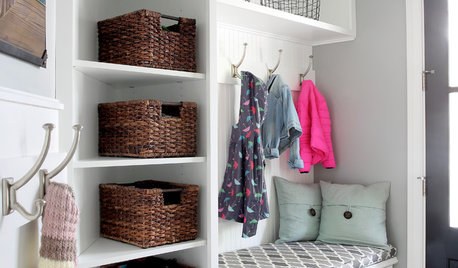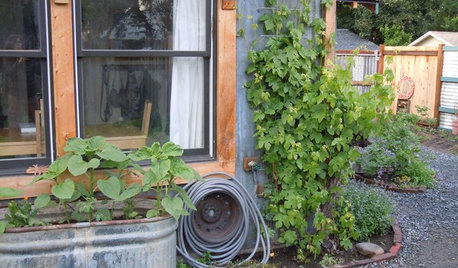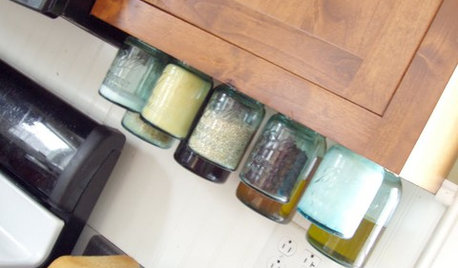Ideas for hillbilly drip system?
david52 Zone 6
12 years ago
Related Stories

GARDENING GUIDESHow to Install a Drip Irrigation System
Save time and water with a drip watering system in your vegetable garden — a little patience now will pay off later
Full Story
MOST POPULAROrganized From the Start: 8 Smart Systems for Your New House
Establishing order at the outset will help prevent clutter from getting its foot in the door
Full Story
GARDENING GUIDESEdible Gardening Essentials: Tips for Traditional Hand Watering
Save the expense and hassle of a complicated garden system with a simple watering can or inexpensive hose add-ons
Full Story
KITCHEN DESIGNGet Organized: Easy DIY Mason Jar Storage
Create a clever under-cabinet pantry system with pretty vintage jars
Full Story
HOUSEPLANTSHow to Add a Living Wall
Learn how to choose systems and plants, and what it will cost to bring a bit of the outdoors in or green up a garden wall
Full Story
EARTH DAYGrow a Beautiful Garden With Ecofriendly Greywater
Reducing home water waste means lower bills and a healthier planet. Here's how to set up a greywater home irrigation system that can help
Full Story
GREEN BUILDINGWhat's LEED All About, Anyway?
If you're looking for a sustainable, energy-efficient home, look into LEED certification. Learn about the program and its rating system here
Full Story
ARCHITECTURE15 Smart Design Choices for Cold Climates
Keep your home safe and comfortable in winter by choosing the right home features and systems
Full Story
KITCHEN DESIGNDesign an Easy-Clean Kitchen
"You cook and I'll clean" might no longer be a fair trade with these ideas for low-maintenance kitchen countertops, cabinets and floors
Full Story
GARDENING GUIDES15 Ideas to Try in Your Garden This Year
These gardening stories were tops among Houzz readers. Which ideas might you try this year?
Full StorySponsored
Columbus Area's Luxury Design Build Firm | 17x Best of Houzz Winner!
More Discussions








lehua49
david52 Zone 6Original Author
Related Professionals
Wrentham Landscape Architects & Landscape Designers · Cottonwood Landscape Architects & Landscape Designers · Azalea Park Landscape Contractors · Battle Ground Landscape Contractors · Cockeysville Landscape Contractors · Del Aire Landscape Contractors · Kaneohe Landscape Contractors · Oak Forest Landscape Contractors · Pueblo West Landscape Contractors · Rio Linda Landscape Contractors · Roswell Landscape Contractors · Snoqualmie Landscape Contractors · Brooklyn Center Solar Energy Systems · Peabody Solar Energy Systems · Wasco Solar Energy Systemstn_gardening
david52 Zone 6Original Author
lehua49
david52 Zone 6Original Author
lehua49
david52 Zone 6Original Author